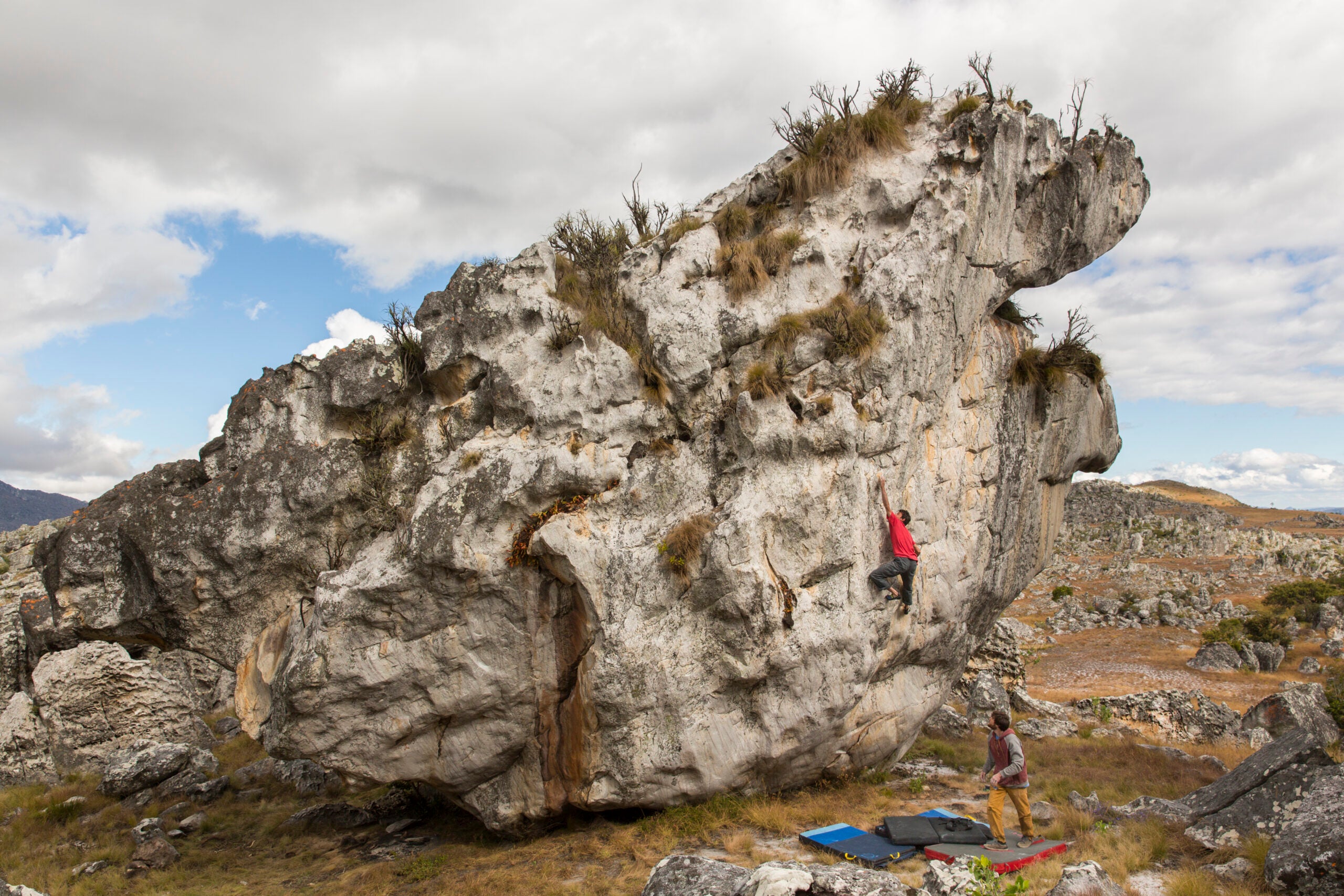How to Reduce Your Impact While Bouldering

Be a crunchy, minimum-impact hippy! After sessioning a boulder, check the environs for trash and spread a few liberal handfuls of pine needles, rocks, leaves, and twigs, over the landing area to restore a “natural” look. (Photo: Getty Images)
With public land managers clued in to the existence of us Pad People and closures looming left and right, it’s time to start bouldering smart and reducing impact. Our presence at the rocks will invariably cause a few changes, but if you think (and act) “green,” you’re less likely to leave the boulders in an unsightly state. Here are a few crafty ways to use your pads and other non-permanent measures to leave landing zones as pristine as possible.
Deck out the pads.
While it was cool to scrape out strip mines in your childhood sandbox, large-scale earth moving is not appropriate at your local boulders. Instead of excavating elaborate terraces on steep slopes, stack and overlap doubled-up pads to form the base of a temporary “terrace.” Drape an open pad or two over this base and blend it into the uphill side of your landing. Though you may have to rebuild your structure after each fall, it will only enhance your bouldering karma.
Tie up the veg.
Leave the saws and pruning shears at home and bring some string instead. Flexible shrubs and small trees or tree limbs can be temporarily tied out of the way to enlarge a landing zone, obviating the need for more drastic measures. Don’t bend fragile plants past their breaking point and layer a rag or tee-shirt under the string to protect the stalk. Always untie and pack out the string when finished.
Get rid of the white trash.
With modern “toothbrush and water” technology you no longer have to leave a boulder looking like a graffiti-riddled New York City subway car. Tick marks are like trash: Clean them up even if they aren’t yours. I usually carry a bit of extra water or a spritzer bottle and some nylon-bristled brushes for this purpose.
Don’t be social.
The classic but shopworn Flagstaff Mountain above Boulder, Colorado, is a prime example of a bouldering area that is being loved to death, replete with a heinous gridwork of social trails. Don’t be lazy! Stick to the most heavily-used trails and avoid unnecessary shortcuts between boulders.

Leave no trace.
Be a crunchy, minimum-impact hippy! After sessioning a boulder, check the environs for trash and spread a few liberal handfuls of pine needles, rocks, leaves, and twigs, over the landing area to restore a “natural” look. Just remember: skankous tape wads, cigarette butts, and energy-bar wrappers do not constitute local flora.